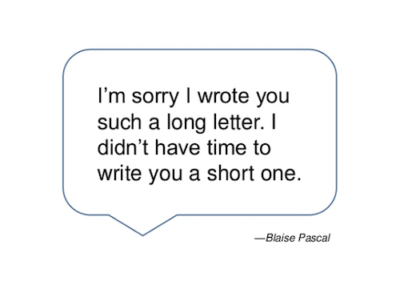Instead of “prospecting” shift the thinking to how to build an audience if you want a pool of potential future clients who might engage you. That is one of the main factors in creating ongoing demand for advisory services in todays world.
Consumers are choosing when and how to engage, and especially in financial services where the consumers desire to initiate engagement with an adviser is usually triggered by some catalyst much of the success in marketing today is simply being positioned appropriately as their logical choice when they do become ready to act.
Loads of social media channels are great for positioning of course, but nothing builds an audience quite as quickly as Twitter can in my experience. And “building an audience” is really what we are talking about…creating a community of people who gather around your conversations and messages…people who are choosing to listen to you.
Most professionals are very good at the one-to-one engagement that leads to a highly qualified prospect becoming a client. Increasingly, the majority of professionals are good enough (if not “very good”) at the middle of the funnel part where we are engaging with a pool of prospects who might become clients one day. So in general terms most advisers are pretty good at handling engaged prospects and nurturing them along until they become clients; but equally; many advisers (perhaps the majority?) say they do not have enough of those engaged prospects being nurtured.
Therefore getting prospects engaged initially remains the toughest challenge it seems, and is where most professional services firms spend the most money and have the most angst.
I’d urge advisers to take a look at using Twitter.
Let’s lead off with a good argument for considering it: Relatively few other professionals have really got to grips with it and are using it well, so there is an excellent opportunity to stand out in comparison to the competition.
That’s a plus of course.
The big reason for using it however is the difference in user behaviour. On Twitter the audience is actively looking for content and thought leaders….they go looking for conversations and content.
That makes it different to most other social media platforms when it comes to business use. Instead of having to push into people’s domains such as how we connect on LinkedIn or attract an audience on Facebook, Twitter pulls people in. Users are actively searching for key words, hastags and content around particular topics of interest. They are choosing to follow them instantaneously and choosing to become part of someone’s audience. Generally a fair proportion of these “followers” move along the path to becoming brand advocates relatively quickly if your content and style resonate too: they share your stuff and your brand very quickly.
They engage.
To make that happen and to create an ever expanding pool of potential prospects there are a few things to get right of course. At the very least:
- Be clear about your positioning and what you want to become known for (or known as an expert in)
- Stay on point with your content and be relevant for your target market audience
- Share other people’s useful and relevant content (it does actually help build your own credibility as a reliable source)
- Try not to use all of your 280 characters per tweet. Allow room for others to make a comment or to Retweet it without them going over their character limit whenever you can.
- Use hashtags for keywords and themes in order to get found by your target market
- Search your own hastags or keywords to see who is asking questions or having debates about your area of expertise. Help them. Answer their questions. People will follow you for it….
- Remember basic courtesies. Say “thank you”. Be nice….no trolling or nasty rejoinders. That stuff will turn off more than just the individual it was aimed at.
- Be constant. There will be an optimal frequency for posting and sharing that keeps an audience engaged, and that frequency will depend on the type of people and the topics you are talking about. It doesn’t have to be high volume either, even a couple of tweets a day may be sufficient if you are on point for your audience. Regardless of the volume of tweets which is right for your audience, you must maintain the volume consistently and constantly.
- Use scheduling, but avoid automation. Using social media dashboards (e.g. hootsuite, buffer, etc) enables you to schedule all your content in one sitting for a week or a month ahead, so the actual work of “being there” doesn’t have to be a daily interruption.
- Engage with followers personally. Rather than just being a broadcasting machine sending out content, take a few minutes to respond to people who comment on your articles or who interact with you.

An additional benefit of Twitter is that it creates the discipline of brevity. You do only have 280 characters to play with to make your point or get your message across.
That means you actually have to force yourself to distil thoughts into easily digestible messages that grab attention and create interaction.
That is a wonderful discipline which helps with all other marketing efforts.
But moving beyond the tips on how to use Twitter you should be mindful that the two final elements which will determine how well and quickly you build an audience are:
-
Being personable, and,
-
Being a personality.
Being “personable” is about using the common courtesies of course, but it is also about avoiding inflammatory topics or divisive issues.
The exception is when the divisive issue is one where you wish to demonstrate your thought leadership. So if there was a debate about somehting within your industry or your target market’s world, then it may make sense to take a position publicly. However it is rarely a great way to win friends or influence people if you start banging on about your political views or wage a vendetta against a corporation who has slighted you.
Be a personality too in the sense that you drop the professional shield a little. Have a bit of fun; show people what you laugh at or what you are passionate about (other than that political thing of course). Show some humanity. Be human.
Follow these tips and you will probably be amazed at how potential future clients will gravitate to you, and how quickly one can build an audience of engaged prospects.
And besides all that….Twitter is a lot of fun.


